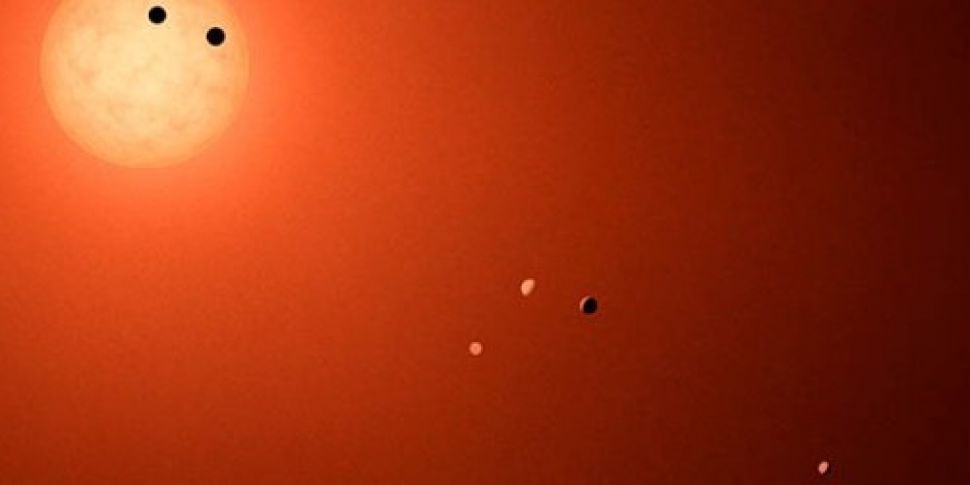Scientists at NASA have discovered a fascinating new solar system with seven Earth-sized planets orbiting a single star.
Three of the planets are firmly located in the ‘Goldilocks zone’ - the area around a parent star where temperatures are not too hot or too cold - meaning the planets could be capable of hosting oceans of water, thought to be an essential building block for life.
Based on their densities, all of the planets are also likely to be rocky.
The mass of the seventh and farthest exoplanet has not yet been estimated but scientists believe it could be an icy, "snowball-like" world.
No other star system has ever been found to contain so many Earth-sized and rocky planets with potential surface temperatures allowing for liquid water - making the system an exciting target in the search for alien life.
While all seven of the planets could have liquid water under the right atmospheric conditions - the chances are highest with the three in the Goldilocks-zone - officially known as the ‘habitable zone.’
“This discovery could be a significant piece in the puzzle of finding habitable environments, places that are conducive to life,” said Thomas Zurbuchen, associate administrator of NASA's Science Mission Directorate in Washington.
“Answering the question ‘are we alone’ is a top science priority and finding so many planets like these for the first time in the habitable zone is a remarkable step forward toward that goal.”
Video credit: NASA
At about 40 light-years (378 trillion kilometres) from Earth, the system of planets is relatively close by in astronomical terms - in the constellation Aquarius.
According to the scientists, the planets are so close to each other that if a person was standing on the surface of one of the planets, they could gaze up and potentially see geological features or clouds on the neighbouring worlds - which would sometimes appear larger than the moon in Earth's sky.
The planets may also be tidally locked to their star, which means the same side of the planet is always facing the star - leaving each side of the planet in a state of constant day or night.

Artist’s impression of TRAPPIST-1f, one of the newly discovered planets in the TRAPPIST-1 system. Image: NASA/JPL-Caltech
Because they are located outside of our solar system, these extra-solar planets are scientifically known as ‘exoplanets.’
The system is called TRAPPIST-1, named for The Transiting Planets and Planetesimals Small Telescope (TRAPPIST) in Chile.
The new results were published Wednesday in the journal Nature, and announced at a news briefing at NASA Headquarters in Washington.
"The seven wonders of TRAPPIST-1 are the first Earth-size planets that have been found orbiting this kind of star," said Michael Gillon, lead author of the paper and the principal investigator of the TRAPPIST exoplanet survey at the University of Liege, Belgium.
"It is also the best target yet for studying the atmospheres of potentially habitable, Earth-size worlds."
Video credit: NASA
In contrast to our sun, the TRAPPIST-1 star – classified as an ultra-cool dwarf – is so cool that liquid water could survive on planets orbiting very close to it - closer than is possible on planets in our solar system.
All seven of the TRAPPIST-1 planetary orbits are closer to their host star than Mercury is to our sun.
If a person were to visit one of the planets, their surroundings would be a lot darker than on Earth, according to the scientists.
The amount of light reaching the eye would be about 200 times less than Earth receives from the sun - meaning visibility would be similar to an Earth sunset.
Despite the relative darkness, the atmosphere would still feel warm - with roughly the same amount of energy reaching the planets from the star - only in infrared.
Since the first exoplanet was discovered in 1992, astronomers have detected more than 3,500 across 2,675 star systems.









